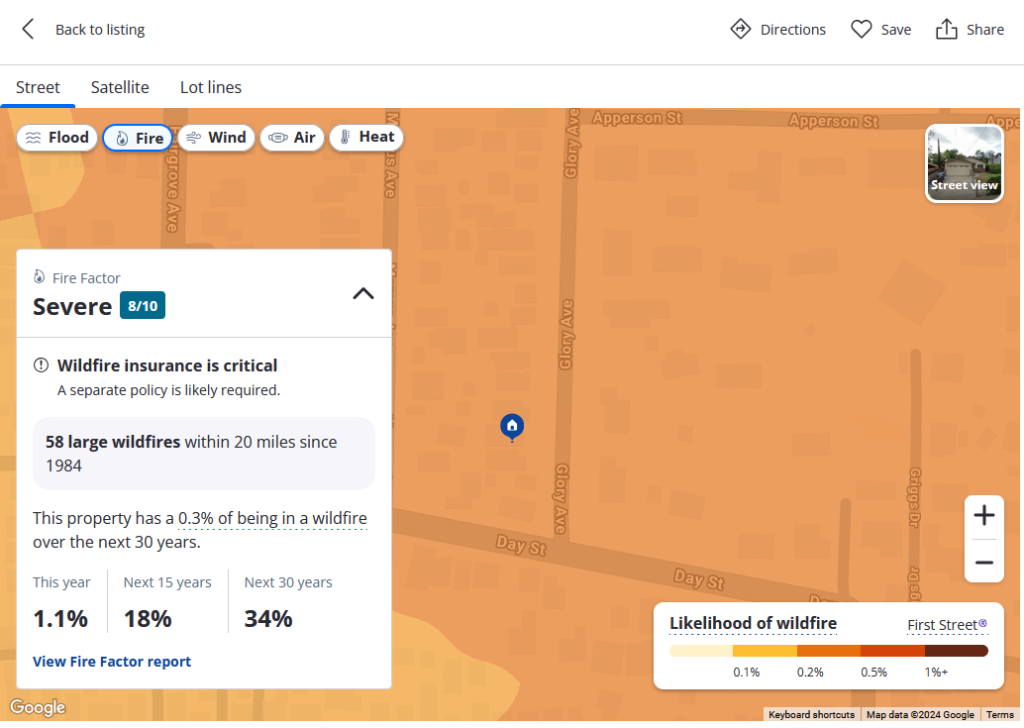Real estate listings on Zillow have been updated to include details about a property’s climate risks, such as potential for floods, wildfires, high winds, extreme temperatures, and poor air quality. This information, provided by analytics firm First Street, also includes historical data on floods and wildfires. The inclusion of climate risk information in real estate listings is intended to help agents inform their clients about the potential impacts on insurance costs, as insurance providers have been pulling out of riskier markets and no longer covering specific categories of natural disasters. Redfin, another real estate company, also includes climate risks in its listings.
A survey conducted by Zillow found that 83% of prospective homebuyers consider climate risk when looking for a home, with younger shoppers showing the most concern about climate impacts. However, despite these concerns, only 23% of those surveyed said they would consider moving to a place with lower climate risks. An earlier study by Redfin found that Americans are actually flocking to areas more prone to climate disasters, highlighting the challenge of consumers understanding and acting on climate risk predictions. The reliability of climate risk predictions is also called into question, as different organizations and models produce significantly different results as to which properties are most at risk of floods and fires.
The inclusion of climate risk information in real estate listings on Zillow and Redfin comes at a time when concerns about flooding, extreme temperatures, and wildfires are growing. As insurance costs rise in response to these climate-related risks, providing potential buyers with information on these risks can help them make informed decisions about their new home. By integrating data on climate risks into real estate listings, agents are better equipped to discuss climate risk, insurance needs, and long-term affordability with their clients. The specific insurance company recommendations or cost details are not provided in the listings, but the information is intended to serve as a resource for buyers to consider when making their purchasing decisions.
While buyers are considering climate risk when looking for a home, the survey results suggest that these concerns have not yet influenced purchasing decisions. Many buyers do not appear willing to move to areas with lower climate risks, and some studies have shown that Americans are moving to areas more prone to climate disasters. This discrepancy between concern for climate risk and decision-making suggests a need for increased awareness and understanding of the potential impacts of climate change. The conflicting predictions by different organizations and models further complicate the situation, making it challenging for buyers to navigate the landscape of climate risk when searching for a new home.
Despite the challenges related to climate risk predictions and buyer behavior, the inclusion of climate risk information in real estate listings is a step towards better informing buyers about the potential hazards associated with a property. As climate risks continue to rise and impact the real estate market, it is essential for buyers, agents, and companies to consider these factors in their decision-making processes. By bringing awareness to climate risks and providing buyers with the necessary information, real estate companies like Zillow and Redfin are helping to shape a more informed and resilient housing market in the face of climate change. The integration of climate risk data into real estate listings serves as a reflection of the growing importance of considering climate impacts in the real estate industry.












